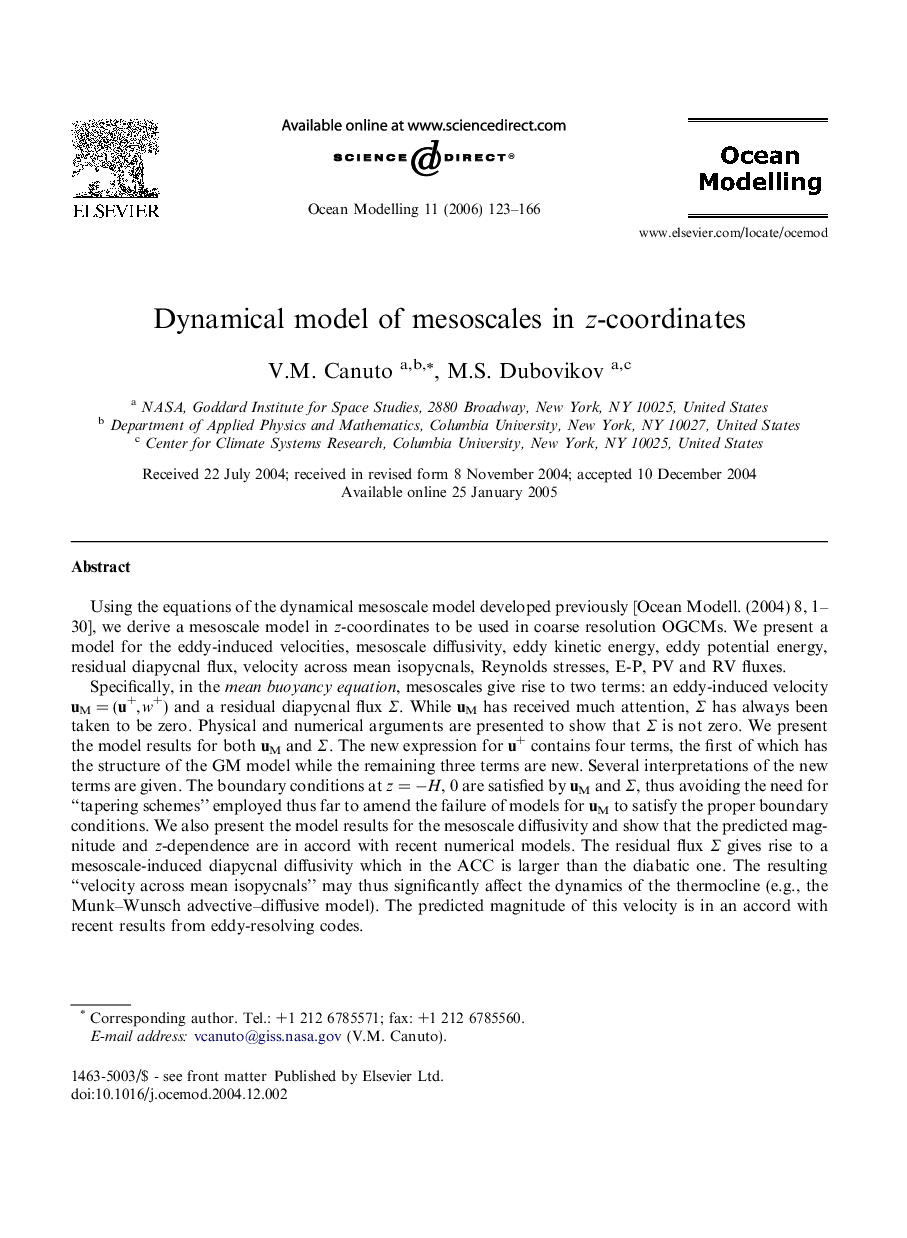| Article ID | Journal | Published Year | Pages | File Type |
|---|---|---|---|---|
| 4552902 | Ocean Modelling | 2006 | 44 Pages |
Using the equations of the dynamical mesoscale model developed previously [Ocean Modell. (2004) 8, 1–30], we derive a mesoscale model in z-coordinates to be used in coarse resolution OGCMs. We present a model for the eddy-induced velocities, mesoscale diffusivity, eddy kinetic energy, eddy potential energy, residual diapycnal flux, velocity across mean isopycnals, Reynolds stresses, E-P, PV and RV fluxes.Specifically, in the mean buoyancy equation, mesoscales give rise to two terms: an eddy-induced velocity uM = (u+, w+) and a residual diapycnal flux Σ. While uM has received much attention, Σ has always been taken to be zero. Physical and numerical arguments are presented to show that Σ is not zero. We present the model results for both uM and Σ. The new expression for u+ contains four terms, the first of which has the structure of the GM model while the remaining three terms are new. Several interpretations of the new terms are given. The boundary conditions at z = −H, 0 are satisfied by uM and Σ, thus avoiding the need for “tapering schemes” employed thus far to amend the failure of models for uM to satisfy the proper boundary conditions. We also present the model results for the mesoscale diffusivity and show that the predicted magnitude and z-dependence are in accord with recent numerical models. The residual flux Σ gives rise to a mesoscale-induced diapycnal diffusivity which in the ACC is larger than the diabatic one. The resulting “velocity across mean isopycnals” may thus significantly affect the dynamics of the thermocline (e.g., the Munk–Wunsch advective–diffusive model). The predicted magnitude of this velocity is in an accord with recent results from eddy-resolving codes.The presence of a non-zero residual flux Σ in the mean buoyancy equation implies that the effect of mesoscales in the T–S equations is not fully accounted for with only the eddy-induced velocity, as generally done. Additional Σ-like diapycnal fluxes must be added to the T–S equations.Mean momentum equations. Since the down-gradient model used in most OGCMs does not represent mesoscales, the latter have not yet been accounted for. A model for the divergence of the Reynolds stresses, the Eliassen–Palm fluxes, the PV (potential vorticity) and RV (relative vorticity) fluxes is presented. We show that the Sverdrup vorticity balance is modified by mesoscales. In particular, while the standard Sverdrup relation does not allow meridional currents to cross the equator, the presence of mesoscales allows such a possibility.
